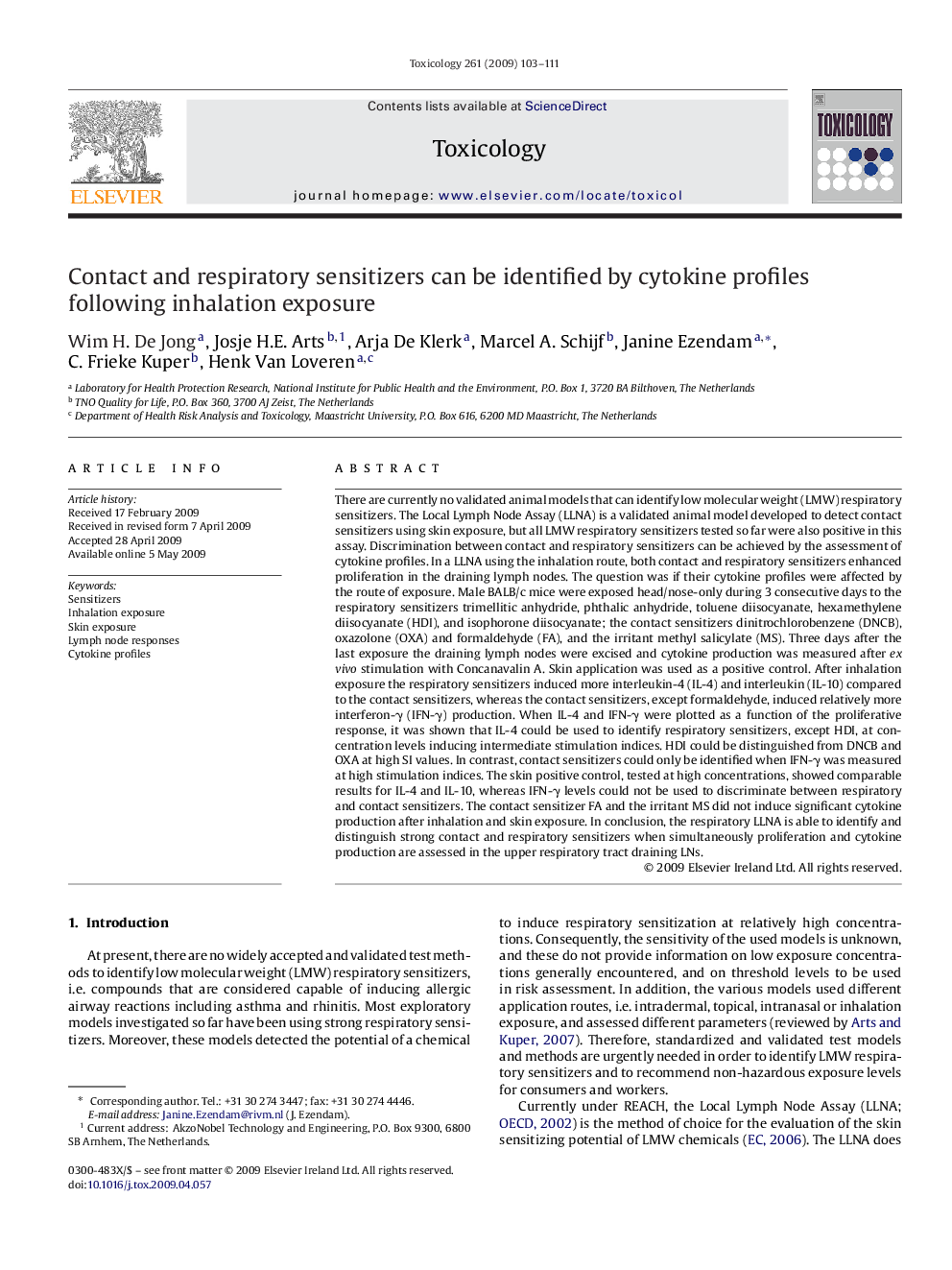| کد مقاله | کد نشریه | سال انتشار | مقاله انگلیسی | نسخه تمام متن |
|---|---|---|---|---|
| 2596722 | 1132545 | 2009 | 9 صفحه PDF | دانلود رایگان |

There are currently no validated animal models that can identify low molecular weight (LMW) respiratory sensitizers. The Local Lymph Node Assay (LLNA) is a validated animal model developed to detect contact sensitizers using skin exposure, but all LMW respiratory sensitizers tested so far were also positive in this assay. Discrimination between contact and respiratory sensitizers can be achieved by the assessment of cytokine profiles. In a LLNA using the inhalation route, both contact and respiratory sensitizers enhanced proliferation in the draining lymph nodes. The question was if their cytokine profiles were affected by the route of exposure. Male BALB/c mice were exposed head/nose-only during 3 consecutive days to the respiratory sensitizers trimellitic anhydride, phthalic anhydride, toluene diisocyanate, hexamethylene diisocyanate (HDI), and isophorone diisocyanate; the contact sensitizers dinitrochlorobenzene (DNCB), oxazolone (OXA) and formaldehyde (FA), and the irritant methyl salicylate (MS). Three days after the last exposure the draining lymph nodes were excised and cytokine production was measured after ex vivo stimulation with Concanavalin A. Skin application was used as a positive control. After inhalation exposure the respiratory sensitizers induced more interleukin-4 (IL-4) and interleukin (IL-10) compared to the contact sensitizers, whereas the contact sensitizers, except formaldehyde, induced relatively more interferon-γ (IFN-γ) production. When IL-4 and IFN-γ were plotted as a function of the proliferative response, it was shown that IL-4 could be used to identify respiratory sensitizers, except HDI, at concentration levels inducing intermediate stimulation indices. HDI could be distinguished from DNCB and OXA at high SI values. In contrast, contact sensitizers could only be identified when IFN-γ was measured at high stimulation indices. The skin positive control, tested at high concentrations, showed comparable results for IL-4 and IL-10, whereas IFN-γ levels could not be used to discriminate between respiratory and contact sensitizers. The contact sensitizer FA and the irritant MS did not induce significant cytokine production after inhalation and skin exposure. In conclusion, the respiratory LLNA is able to identify and distinguish strong contact and respiratory sensitizers when simultaneously proliferation and cytokine production are assessed in the upper respiratory tract draining LNs.
Journal: Toxicology - Volume 261, Issue 3, 10 July 2009, Pages 103–111